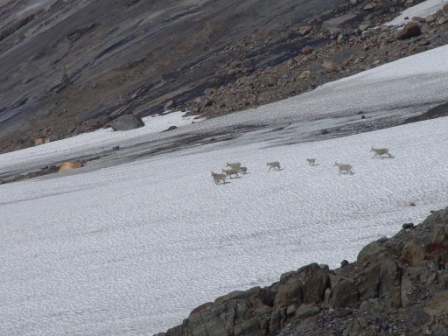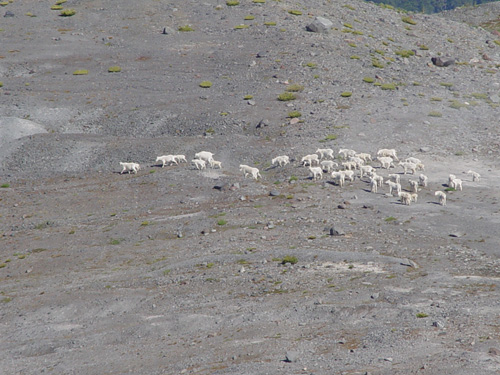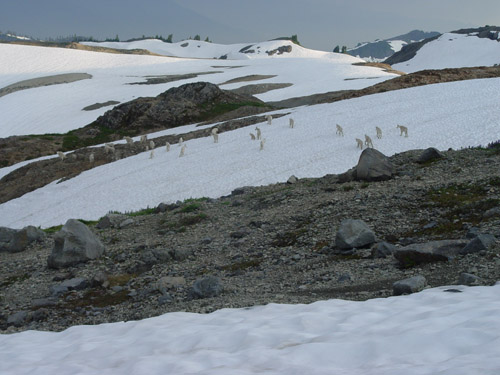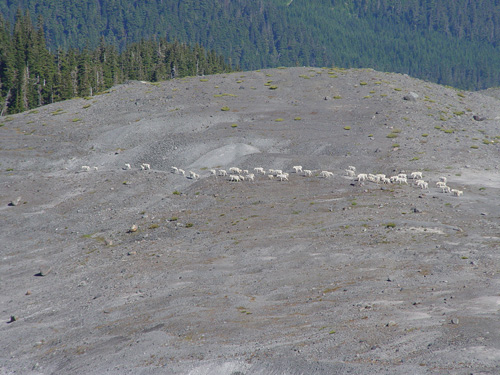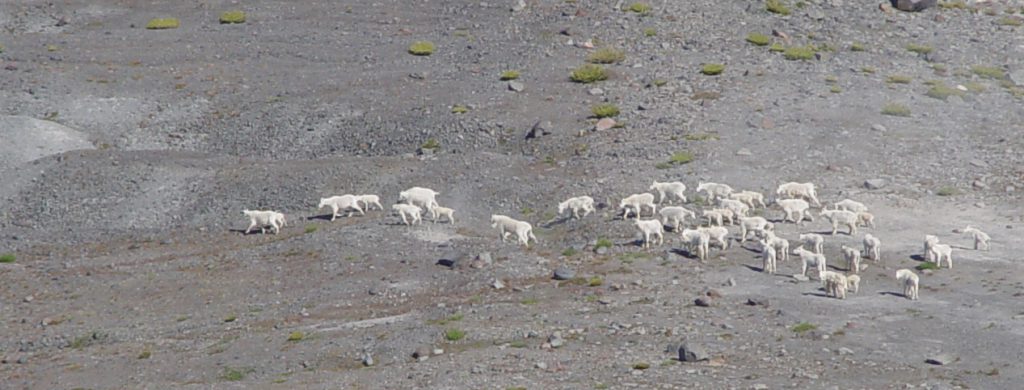
Mountain Goats of Mount Baker North Cascade Glacier Climate Project
Since 1984 we have spent the better of a week each summer on Ptarmigan Ridge on the northeast side of Mount Baker investigating the Rainbow, Sholes and Ptarmigan Ridge glaciers. The National Forest Service asked us to not our observations on Mountain Goats, and we have done so each summer since. This is an open alpine area and it is not difficult to observed the mountain goat herds. In general there are three of them in August each with there own specific ranges. One group tends to prefer the Wells Creek Drainage, one the Rainbow Creek Drainage and a third the Swift Creek Drainage with some overlap. From 1999 to 2010 we observed all three herds each year. The mild winters after 2002 have generated much higher populations than observed at any point previously. A few years poor weather has limited our ability to observed mountain goats, 1987, 1992, and 2011. The mountain goats head to bare rock and snow areas for much of the day, seeking out the vegetation primarily in the morning and evening. The 2003-2005 period featured mild winters, and warm, leading to a sharp rise in popluation. The 2006-2008 periiod witers were slightly above average for snowpack, but summers were mild and the population continued to increase.
The summer of 2007 we observed a herd of 52 mountain goats below Sholes Glacier. We also observed a separate herd of at least 25 mountain goats several miles away, but just a short time after the larger herd sighting and in a different direction than the larger herd could have reached without crossing our path. Below is a portion of the 52 goat herd seen in 2007. In 2009 we saw three separate herds in short order on the morning of August 3rd, 46 in the Swift Creek Herd below the Coleman Pinnacle snow patches on the north side of the ridge, 62 in the Wells Creek herd below the Sholes Glacier and 10 goats in the Rainbow herd at the mid-section of the Rainbow Glacier. There was one lone scout as well, for a record 119 mountain goats. The range does not look overgrazed despite this large increase in population. The herds had 13, 4 and 18 kids respectively.
The winter of 2011 snowpack second only to 1999, this was followed by an above average winter for snowpack in 2012, whichh led to a sharp decline in herd size. Mild winters and warm summers have been the pattern since. The population recovered from 2011-2020, but never approached the 2009 level. The particularly warm summers of 2014, 2015, 2021, 2022 and 2023 have been a stress on the goats, and herds have declined in last decade. Vegetation has been stressed particularly in places that lose their snowcover early, which are the same locations that often are exposed in winter for forage. In the summer range there is not a shortage of forage.

